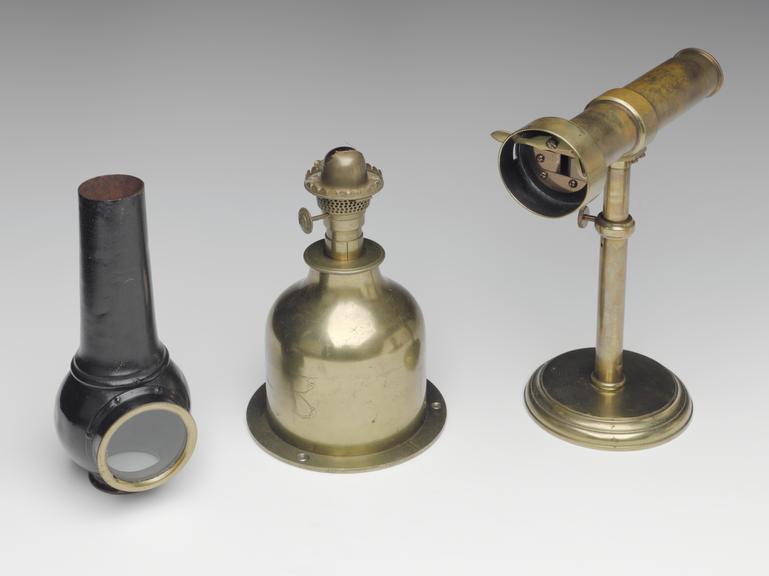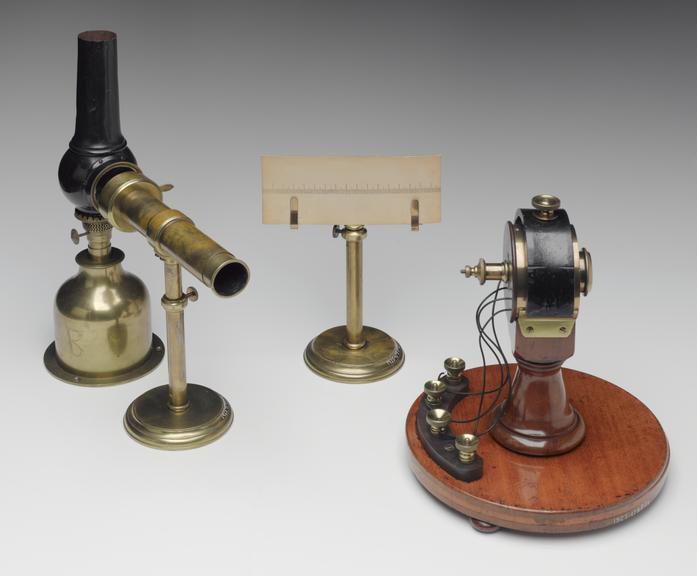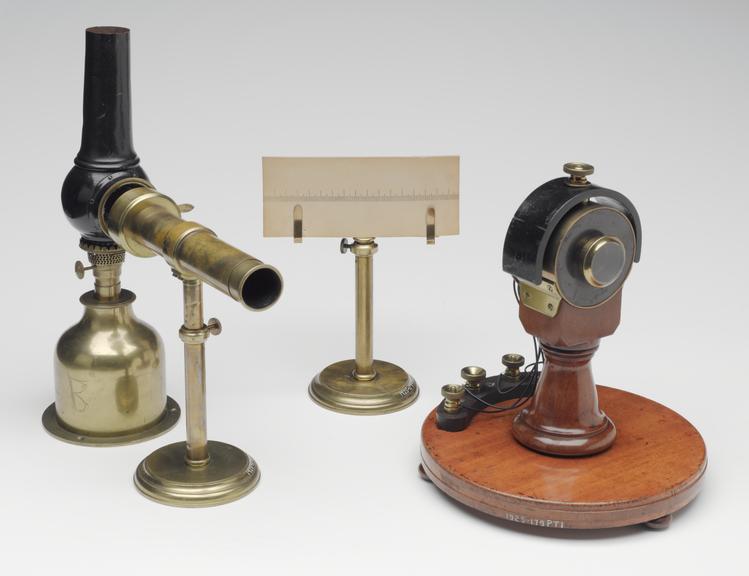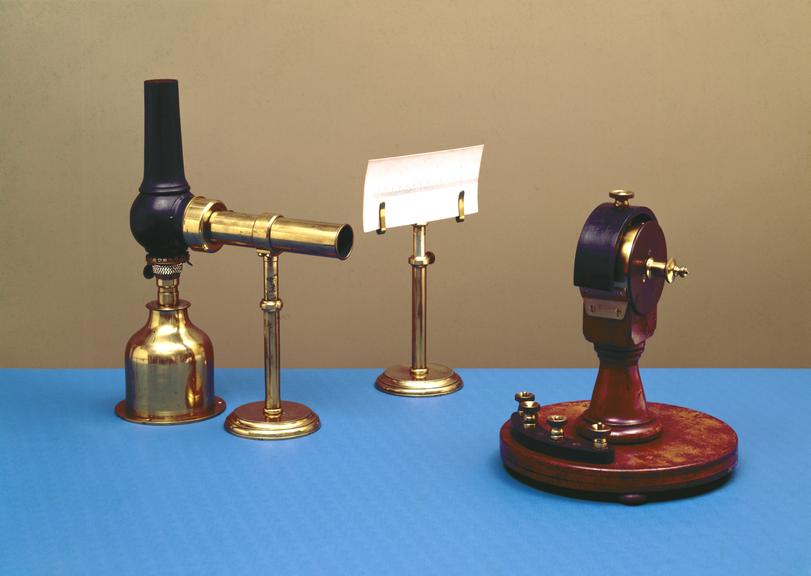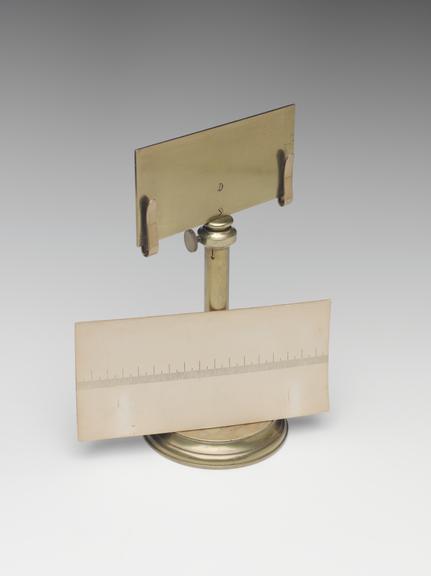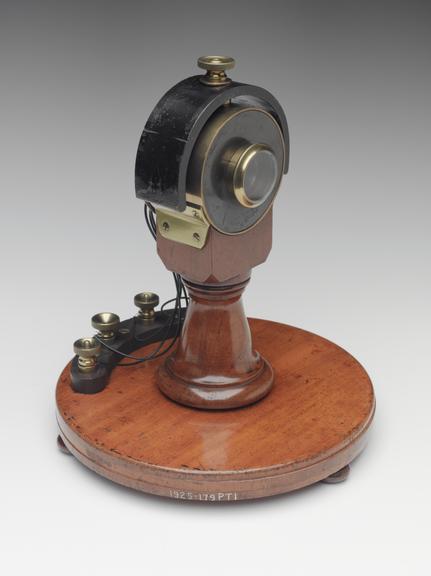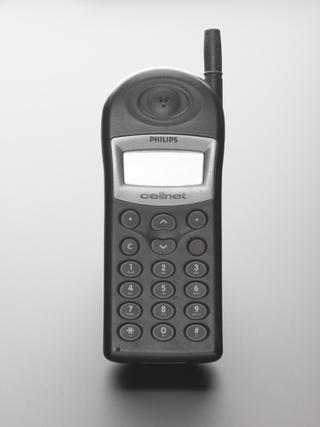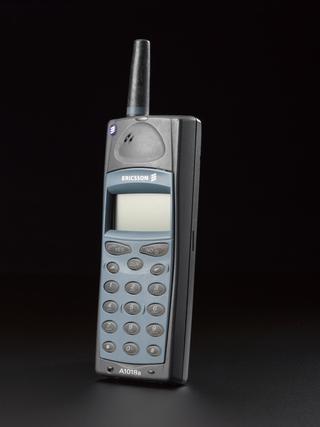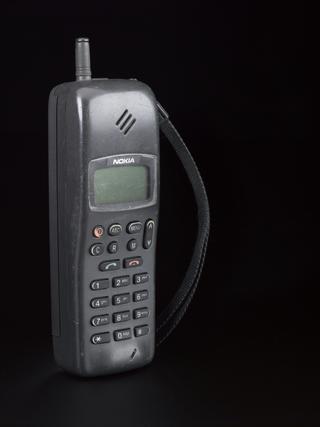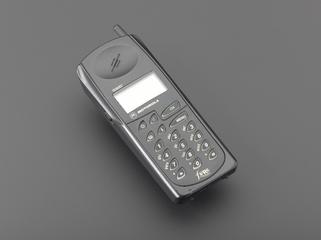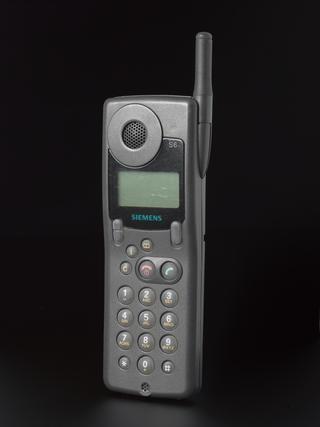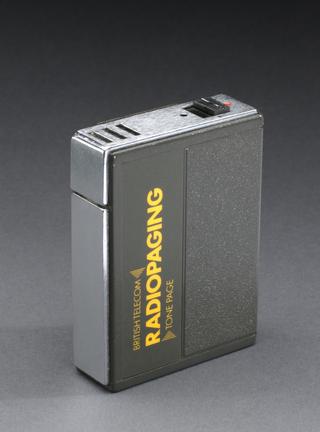Thomson mirror speaking galvanometer, 1858
Thomson mirror speaking galvanometer, made by Elliott Brothers, Strand, London, England, 1858.
More
A mirror galvanometer is a particularly sensitive electrical indicating instrument and was used to detect the extremely weak currents received through long submarine cables. Instead of a needle indicator, a mirror with a bar magnet cemented on the back is suspended on silk threads within the coil. A beam of light shone on the mirror is reflected on to a scale card some distance away, thus magnifying any movement of the mirror. Instruments of this type were used on the Atlantic cable expedition of 1858. The mirror galvanometer became the standard instrument for receiving telegraph messages, but it did have a disadvantage in that it needed two operators - one to read and call the signal, and another to write the message down. This problem was solved by Thomson when he invented the siphon recorder, which used a glass tube dipped in ink to record the movements of the cable on a moving tape, to then be read and decoded.
- Measurements:
-
overall: 275 mm 223 mm, 2.2 kg
- Materials:
- iron , glass , brass (copper, zinc alloy) , paint and wood (unidentified)
- Object Number:
- 1925-179 Pt1
- type:
- galvanometer
- Image ©
- The Board of Trustees of the Science Museum







